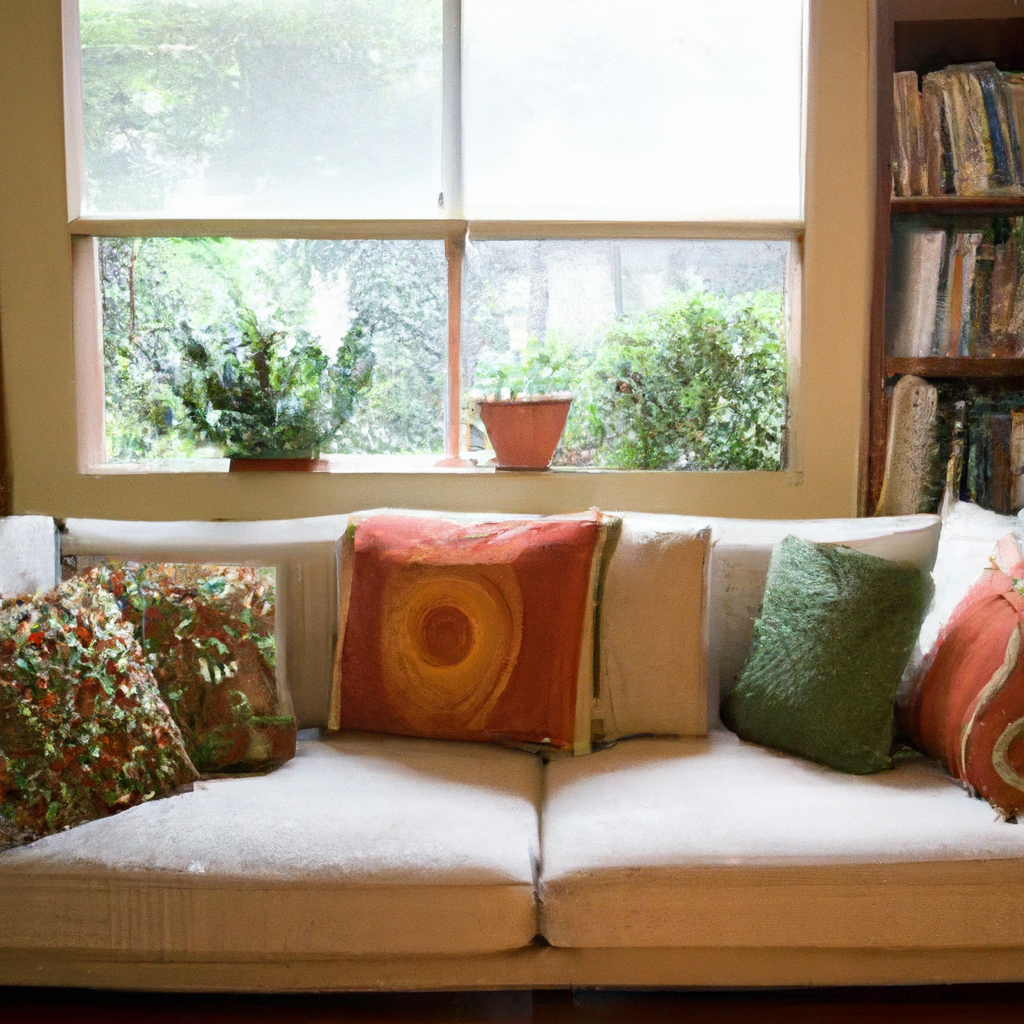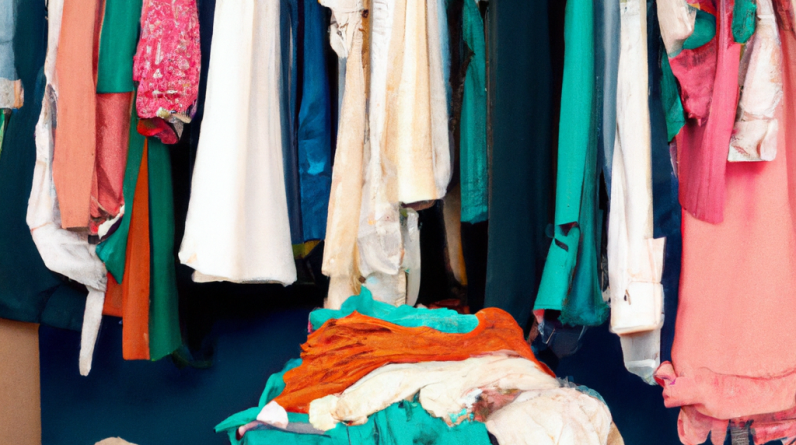
In this article titled “Tips and tricks for achieving a minimalist lifestyle with a family,” you will find valuable insights and advice on how to simplify your life and embrace minimalism, even with a family. The content of the article includes tips on creating a capsule wardrobe for both adults and children, using small bins or books to store sentimental items, focusing on present needs rather than future purchases, dealing with paper clutter, being mindful of the food you provide for your children, organizing toys, simplifying birthday parties and gifts, and the benefits of living with less stuff. With these practical tips and the shared experience of the creator, you can learn how to navigate minimalism in a family setting and enjoy a more simplified and fulfilling life together.
Table of Contents
Capsule Wardrobe
Creating a capsule wardrobe for adults
Creating a capsule wardrobe can be a great way to minimize the amount of clothing you have to manage and make getting dressed in the morning a breeze. A capsule wardrobe is a curated collection of essential and versatile pieces that can be mixed and matched to create multiple outfits. To create a capsule wardrobe for adults, start by decluttering your current wardrobe and getting rid of items that you no longer wear or love. Keep only the items that you feel comfortable and confident in.
Next, focus on selecting pieces that are timeless, classic, and can be worn in multiple ways. Stick to a neutral color palette with a few pops of color to keep things versatile. Aim to have a few tops, bottoms, dresses, and outerwear pieces that can be mixed and matched to create different outfits. Consider the climate and your lifestyle when selecting items for your capsule wardrobe.
Remember, the goal of a capsule wardrobe is to simplify your wardrobe and make getting dressed easier, so keep your collection of items small and intentional. By having a curated collection of items that you love and feel good in, you’ll be able to save time and energy when it comes to choosing an outfit every day.
Creating a capsule wardrobe for children
Creating a capsule wardrobe for children can also be incredibly beneficial in simplifying your life and minimizing clutter. Children often have a lot of clothes that they outgrow quickly, and it can become overwhelming to keep up with the constant rotation of clothing.
To create a capsule wardrobe for children, start by decluttering their current wardrobe and getting rid of items that no longer fit or are worn out. Just like with adults, keep only the items that your child loves and feels comfortable in.
Next, focus on selecting versatile pieces that can be mixed and matched to create different outfits. Opt for basic items such as t-shirts, leggings, jeans, and dresses that can be paired with other items to create different looks. Consider the climate and your child’s activities when selecting clothing items.
By creating a capsule wardrobe for your child, you’ll be able to reduce decision fatigue, make getting dressed easier, and minimize clutter in their bedroom. Plus, having fewer clothes can also teach them the value of quality over quantity and help them develop their own sense of style.
Sentimental Items

Assigning a small bin or book for sentimental items
While minimalism is all about decluttering and letting go of unnecessary possessions, it’s important to also acknowledge and honor sentimental items that hold special meaning to us. One way to do this is by assigning a small bin or book for sentimental items.
For each family member, designate a special place to store sentimental items. This could be a small bin or a memory book where you can keep things like letters, photographs, or small mementos that bring back fond memories. By setting a physical boundary for these items, you can prevent them from taking over your living space while still holding onto the memories that matter most.
Limiting the number of keepsakes
When it comes to sentimental items, it can be tempting to hold onto everything. However, it’s important to be mindful of the number of keepsakes you choose to keep. Limiting the number of keepsakes can help prevent excessive clutter and make it easier to cherish and appreciate the ones you do decide to keep.
Instead of keeping every single artwork or school assignment your child brings home, choose a few significant pieces that truly capture their creativity or milestones. This allows you to preserve the memories without feeling overwhelmed by the sheer volume of items. The same goes for your own sentimental items – carefully select those that hold the most meaning and let go of the rest.
By assigning a small bin or book for sentimental items and limiting the number of keepsakes, you can strike a balance between decluttering and honoring the memories that matter to you and your family.
Focus on Present Needs

Avoiding constant buying for the future
One common mistake when it comes to minimalism is constantly buying for the future. It’s important to shift the focus from constantly purchasing items in anticipation of what might be needed in the future to emphasizing present needs. This not only reduces unnecessary clutter but also saves money and prevents waste.
Instead of buying clothes or toys for your children that they may eventually grow into, focus on providing them with items that they need and enjoy right now. This ensures that the items are used and appreciated rather than being stashed away in a closet for months or even years.
By avoiding constant buying for the future, you can break free from the cycle of accumulating unnecessary items and instead focus on intentionally selecting items that meet your present needs.
Emphasizing present needs
Emphasizing present needs means being mindful of what you truly need and choosing to prioritize those items over wants or future possibilities. By practicing mindfulness in your purchasing decisions, you can avoid accumulating excess items and live a more intentional and clutter-free life.
For adults, this may mean carefully considering whether a new purchase will truly enhance your life or simply contribute to the accumulation of unnecessary possessions. Before buying something, ask yourself if it aligns with your current needs and if it will bring value and joy to your life.
For children, it’s important to involve them in the decision-making process. Teach them the importance of distinguishing between needs and wants, and encourage them to prioritize items that they truly need or will actively use and enjoy. This will help instill valuable habits and prevent them from becoming overwhelmed with excessive possessions.
By emphasizing present needs, you can make more intentional and mindful purchasing decisions, reducing clutter and promoting a simpler and more purposeful lifestyle.
Dealing with Paper Clutter

Saving only significant milestones
As parents, it can be challenging to manage the influx of paper clutter that comes with children’s artwork, school assignments, and other paper-based mementos. To prevent paper clutter from taking over your home, it’s important to prioritize and save only the significant milestones.
When your child brings home artwork or school assignments, take the time to review and decide which pieces hold the most value or represent significant milestones. Keep a few select pieces that showcase their progress or capture their unique creativity. This might include their first written word, a particularly impressive drawing, or a special project that they were proud of.
By saving only the truly significant milestones, you can preserve the memories without being overwhelmed by the sheer volume of paper clutter.
Reducing paper clutter from children’s artwork
In addition to saving only significant milestones, there are other strategies you can implement to reduce paper clutter from your children’s artwork.
Consider digitizing artwork by taking photos or scanning them. This allows you to preserve the memory without the physical clutter. You can create a digital album or even turn the artwork into a photobook to make it easily accessible and enjoyable for years to come.
Another option is to repurpose artwork into practical items such as greeting cards, bookmarks, or wrapping paper. This way, you can still appreciate and share their creations while minimizing clutter.
Finally, involve your children in the decision-making process. Teach them the importance of decluttering and let them choose their favorite pieces to display or save. This helps instill mindful habits and encourages them to value quality over quantity.
By implementing these strategies, you can effectively manage and reduce paper clutter from your children’s artwork while still preserving the memories that matter most.
Mindful Food Choices

Providing food items children enjoy
When it comes to food, minimalism extends beyond decluttering physical possessions. It’s also about being mindful of the food choices we make for our children.
One way to simplify and minimize food-related stress is by focusing on providing food items that your children truly enjoy. This means understanding their preferences and offering them simple, nutritious meals that they are more likely to eat. Rather than constantly introducing new and potentially disliked foods, stick to their favorites as the foundation of their diet.
By reducing the variety of foods and focusing on the ones they genuinely enjoy, you can simplify meal planning, grocery shopping, and reduce the likelihood of wasted food.
Reducing food waste
Food waste is a significant issue that can be addressed through minimalism. By making more mindful food choices, you can reduce waste and save money.
To minimize food waste, plan meals in advance, and create a shopping list based on those meal plans. This helps ensure that you buy only what you need and reduces the likelihood of impulse purchases that may end up going to waste.
Properly store and organize your food to maximize its shelf life. Rotating food so that older items are used first can help prevent items from expiring before they are consumed.
It’s also important to teach your children about the value of food and encourage them to be mindful eaters. This can be done by involving them in meal planning and preparation, showing them how to properly store leftovers, and teaching them to only take what they will eat to reduce plate waste.
By being mindful of the food you provide for your children and actively working to reduce waste, you can simplify mealtime and contribute to a more sustainable and conscious lifestyle.
Toy Organization

Keeping all toys in the children’s room
To minimize clutter and promote organization, it’s beneficial to keep all toys in the children’s room. This helps create designated play areas and prevents toys from taking over the entire house.
By confining toys to one space, you can maintain a more organized and visually appealing living environment. It also encourages children to focus on playing in their designated area rather than scattering toys throughout the house.
Using bins for toy storage
Using bins for toy storage is a practical and effective way to keep toys organized and easily accessible. Invest in a few sturdy, stackable bins and assign each toy category its own bin.
Labeling the bins with either words or pictures can help young children identify where each toy belongs and encourage them to take responsibility for cleaning up after playtime. By having a specific place for each toy, children can easily find what they’re looking for and put it away when they’re done playing.
Additionally, it’s important to periodically declutter and rotate toys to prevent overwhelming clutter. Keep only the toys that your child enjoys and plays with regularly, and consider donating or selling the ones that are no longer used.
Encouraging independent play
One of the benefits of having a simplified and organized toy area is that it encourages independent play. By having easy access to toys in their designated space, children can freely explore and engage in imaginative play without needing constant guidance or involvement from adults.
Independent play not only promotes creativity and problem-solving skills but also allows children to develop a sense of autonomy and self-sufficiency. By providing a clutter-free and organized play area, you’re creating an environment that supports and encourages independent play.
By keeping all toys in the children’s room, using bins for storage, and encouraging independent play, you can create a more organized and enjoyable playtime experience for your children.
Simplifying Birthday Parties
Reducing the number of birthday gifts
When it comes to birthday parties, one way to embrace minimalism is by reducing the number of birthday gifts. Instead of focusing on quantity, shift the focus to quality and meaningful gifts.
Encourage family and friends to consider experiences or consumable gifts rather than physical toys. This could include tickets to a local attraction, a membership to a museum, or a special outing such as a movie or a day at the park.
Additionally, you can suggest a “one gift” rule, where each guest brings one meaningful gift instead of multiple smaller gifts. By doing this, you can ensure that the gifts received are special and cherished items rather than adding to unnecessary clutter.
Focusing on meaningful experiences
Another way to simplify birthday parties is by focusing on meaningful experiences rather than material possessions. Consider planning activities or outings that create lasting memories and provide opportunities for quality time with family and friends.
This could include a themed party at a local park, a craft activity where children create their own party favors, or even a group outing to a trampoline park or a nature hike. By shifting the focus from the number of gifts received to the experiences shared, you can create a more memorable and enjoyable birthday celebration.
By reducing the number of birthday gifts and focusing on meaningful experiences, you can simplify birthday parties and create lasting memories for your child.
Benefits of Minimalism
More time for travel and experiences
One of the significant benefits of adopting a minimalist lifestyle as a family is the freedom it provides to prioritize travel and experiences. By living with less stuff, you have more time, energy, and financial resources to invest in creating meaningful memories through travel.
With fewer physical possessions to maintain and organize, you can focus on planning trips, exploring new destinations, and spending quality time together as a family. Traveling allows you to broaden your horizons, experience different cultures, and create memories that will last a lifetime.
Increased enjoyment of activities
Living with less stuff also allows for a more intentional and focused enjoyment of activities. By decluttering and simplifying your surroundings, you can create a space that is dedicated to your favorite hobbies and activities.
Whether it’s setting up a designated reading nook, a home gym, or a crafting area, having a clutter-free environment can enhance your enjoyment and engagement with these activities. By streamlining your possessions and creating dedicated spaces for activities, you can fully immerse yourself in the things you love without distractions.
Reduced stress and clutter
Perhaps the most evident benefit of minimalism is the reduction in stress and clutter. By decluttering and simplifying your home, you create a space that is calm, organized, and free from the overwhelm that excess possessions can bring.
Having fewer things to manage and maintain means less time spent cleaning, organizing, and searching for lost items. This leads to a more peaceful and stress-free environment for you and your family.
By practicing minimalism and living with less, you create a space that prioritizes what truly matters, allowing you to focus on experiences, relationships, and personal growth rather than accumulating more material possessions.
In conclusion, adopting a minimalist lifestyle as a family can bring numerous benefits, including simplified wardrobes, reduced clutter, and increased enjoyment of activities and experiences. By focusing on present needs, limiting sentimental items, and making mindful choices in areas such as food and toy organization, you can create a more intentional and fulfilling life for yourself and your family. Embracing minimalism allows you to shift your focus from accumulating possessions to cultivating meaningful experiences and memories. So why not give minimalism a try and see how it can transform your family’s life for the better?







